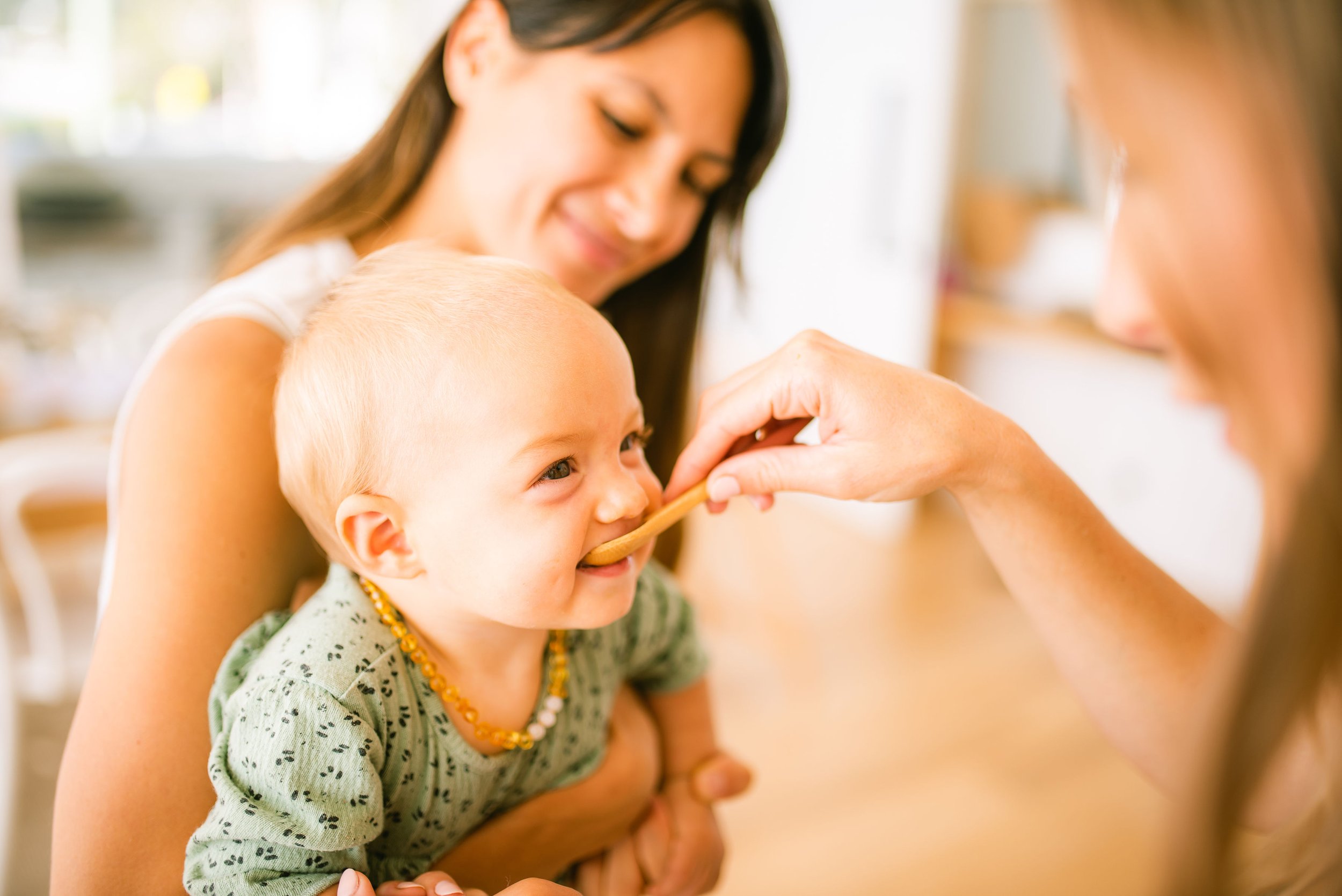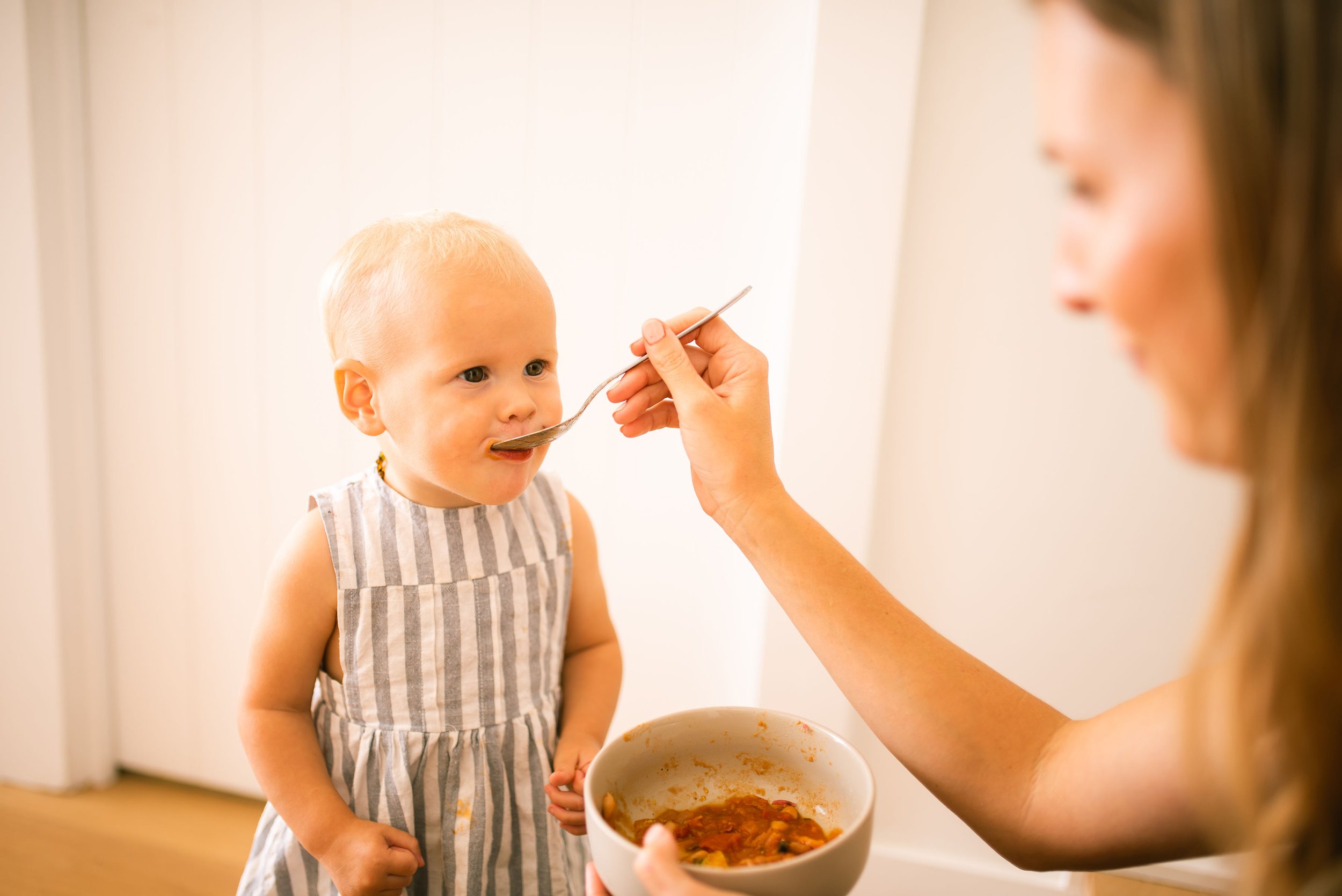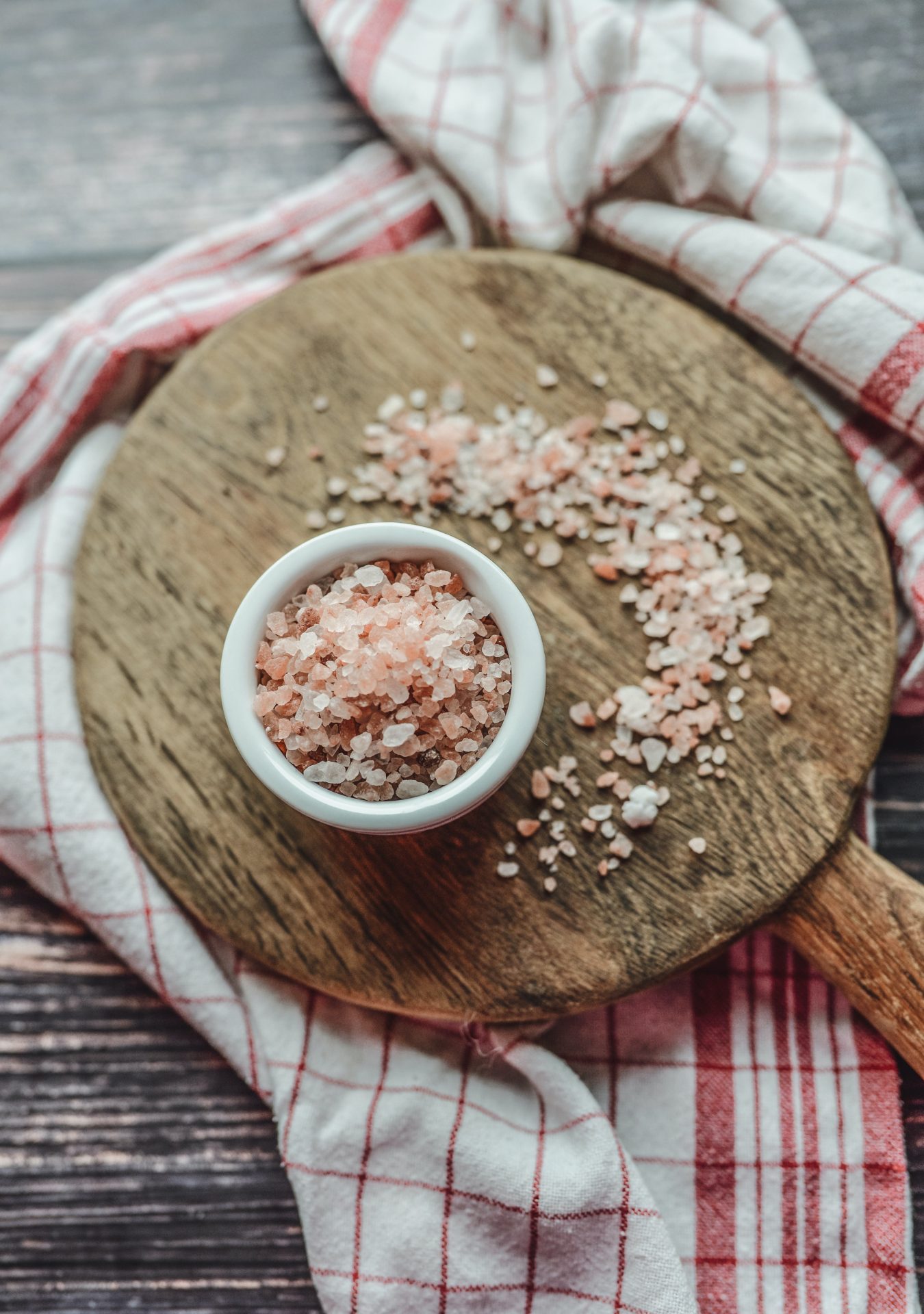Introduction to solids, to spoon or not?
It’s common for parents to struggle with how to introduce solids, whether to use a spoon and puree or skip the spoon completely and offer finger-foods. When thinking about the introduction to solids, parents can be well supported by being offered some of the following research and some tips and tricks.
Let’s face it, spoon feeding as part of the introduction to solids has been judged heavily since Gill Rapley published her book, “Baby-Led Weaning” and it gained momentum amoung mother’s groups. But what we are failing to explain to parents is that the evidence doesn’t show that the spoon is the problem, but rather HOW the spoon-feeding is done. If we feed our little ones by honouring what they are communicating during mealtimes, by feeding them responsively, there is little difference between spoon-feeding and finger foods when introducing solids.
Gill Rapley (author of “Baby-Led Weaning” (BLW)) played a very important part in the evolution of feeding our babies, she highlighted the much needed idea that weaning should be baby-led. Rapley’s approach states that parents should only let their baby put food in their own mouth by offering finger foods. Rapley believes that a baby can only self-regulate their food intake if they are the ones that put the food in their mouths. But when we look at the evidence, we see that when parents respond to their baby’s cues (of fullness/of hunger) when spoon-feeding, babies are able to self-regulate their intake of food the same as babies who were introduced to solids using a Baby-Led Weaning approach.
Following one approach (BLW vs spoon-feeding) rigidly can give us a feeling of comfort, that we are doing things “right” and following the rules, but a rigid approach couldn’t possibly meet the needs for each little individual and their family. You will hear me talk about “following their lead” or being responsive to what children are telling you, about their bodies, about their skills, about their preferences. But we can only understand this if we provide them with the opportunity to lead, in most cases this is achieved by offering spoons, purees and finger foods. Or spending a few weeks offering puree and transitioning to mash and finger foods by 9 months.
Responsively feeding our little ones means that we are sensitive to a baby’s developmental readiness for certain textures and for self-feeding. Not all babies are able to begin their solids journey with finger foods or by self-feeding. By following the Division of Responsibility, you will allow your baby to decide if they eat and how much they eat while responding to what their bodies are telling you. Are they continually gagging on finger foods? Or are they disinterested in spoon-feeding? As the parent, you support their transition to the family table by offering different textures and trialling self-feeding as well as feeding them. Here your baby leads by choosing what texture and how they are fed. They may choose puree, mash or finger-foods and they may like being spoon-fed (either a choice or they don’t have the skills yet to self-feed) or they may like self-spoon feeding. How they respond to these will be based on their skill level and temperament. Responding to your baby and their skill level and how they want to eat, by providing foods and opportunities accordingly, is what is truly baby-led.
As adults we use spoons at meals, right? There are many things we need a spoon to eat; soups, overnight oats, brekkie cereals, yogurts and desserts. So, it makes sense that the weaning process involves us offering spoons and other utensils alongside finger foods. Our goal is to offer our little ones food so that they can explore it, eat it if they decided to and to develop the skills needed to manipulate the foods with their mouths, hands and with utensils.
How to spoon
Here’s a few tips to set you and your little one up for success:
1) Choose the right spoon:
The right spoon is the one that matches the size of your little one’s mouth and their skill level. Pick a spoon with a width about the same as your little one’s tongue, a spoon too wide isn’t very comfortable and doesn’t allow baby’s mouth to do what it needs to in order to manipulate the food off the spoon. It’s not until around 8 months that baby develops the ability to move their upper lip down and forward on the spoon to remove food from the spoons bowl. With this in mind, your baby will benefit from a spoon with a shallow bowl until around 8 months, where you can introduce a spoon with a deeper bowl.
Some babies will also benefit from a short, wide handled spoon as it is easier for them to manipulate for self-feeding.
Here are some of my favourite first spoons, there are many that fit the profile, these are just ones that I’ve personally come across and work well for introducing spoon feeding and learning how to self spoon feed for babies and children ive worked with:
Heinz Baby Basics Soft Tip Weaning Spoons 4m+
2) Seating:
Ensure your baby is well supported during mealtimes, this increases their safety (reducing the risk of choking and food/drink entering their airway) but also their ability to communicate and manipulate their mouth and hands. Ensure baby is in midline and comfortable. To help your little one manipulate the spoon or finger food, adjust their seating so their highchair tray or the table is at a height where they can rest their elbows comfortably. This will give them more support and make it easier for them to explore and self-feed with their hands and utensils.
3) Follow baby’s cues:
You may have a baby who enjoys being spoon-fed or you may have a baby who likes to take the spoon from you to put in their mouth themselves, some like a little bit of both. Let them show you how they would like to do it. Watch your baby for cues that they want more (looking at the spoon, opening mouth and reaching) as well as for cues that they are finished (turning their head away, batting the spoon away and keeping their mouth shut). Honour their communication, this allows them to experience hunger and fullness and understand their internal cues. It also establishes a trusting feeding relationship between you and your baby.
Spoon Tag
Do you ever offer a spoon full of food to your baby, they take the spoon but won’t give it back? You try to pry it from their little hands but they’re so very keen to keep a hold of it. Sometimes this results in tears, as they didn’t quite realise you were just reloading it to give it back?
Try spoon tag, have 2-3 spoons on the go. Preload one spoon and either present it to your little one or pop it on their tray/the table (in reaching distance). As they hold the first spoon, preload the next one and pop it in front of them or bring to their mouth. Some babies will drop spoon one, others may hold spoon one and two, so tag spoon three in. Preload spoon three or bring it to their mouth, at this point they will drop one of the spoons, giving you the opportunity to reload it. Continue to play this little game of spoon tag throughout their meal, preloading the spoon they drop and then reoffering.
Common Spoon-feeding Mistakes
Our overarching goal for mealtimes is always enjoyment. There are a few spoon-feeding techniques that may take the joy out of mealtimes for our little ones and are better avoided. If you have done these, it’s most likely you have seen your parents feed a baby this way and just like other parenting approaches are inherited, this one probably was too.
Present the spoon to baby, watch for them to communicate it’s ok to bring to their mouth, keep the spoon horizontal. Avoid tipping the spoon up and scraping the food from the spoon on their upper lip or gums. Keeping the spoon horizontal allows your baby to actively participate in a meal, choosing to take the food from the spoon. It also gives your baby the opportunity to develop the skill of moving their upper lip down and forward to remove the food from the spoon.
Scraping food from your little one’s face with a spoon or wiping food off with a cloth during the mealtimes can also take away from the enjoyment of a meal. Our little ones don’t like their faces wiped at the best of times, so it’s much more comfortable for them if you save wiping till the end of the meal. Firm pats on their face are also much easier tolerated by their little nervous/sensory systems than wiping.
Written by Jamie Williams, Paediatric Speech Pathologist
Found on Instagram @nourished.babes






+ show comments
- Hide Comments
add a comment